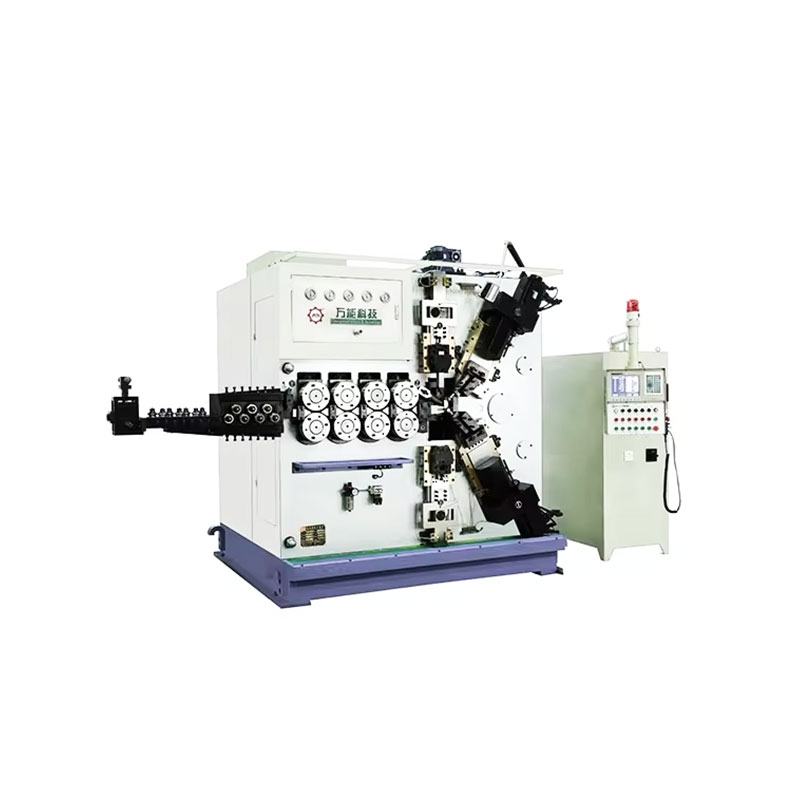A spring coiling machine operates by shaping a continuous length of wire into coiled springs of specific dimensions and characteristics. The process involves feeding the wire into the machine, where it is bent, coiled, and cut to form individual springs. Here's a breakdown of how it operates and the key components involved:
Wire Feeding Mechanism
Function: The wire is fed into the machine through a wire feed mechanism, which typically consists of rollers or a servo-driven system that controls the speed and tension of the wire.
Key Component: Wire guide rollers or a wire straightener ensures the wire remains straight and maintains consistent tension during the coiling process.
Coiling Point and Mandrel
Function: The coiling point is where the wire is wrapped around a mandrel or coiling tool to form the spring's shape. The mandrel determines the inner diameter of the spring.
Key Component: The mandrel, which can be of varying diameters, and coiling fingers or pins that help guide and position the wire during the coiling process.

Pitch Tool
Function: The pitch tool controls the distance between the coils of the spring, defining the spring’s pitch. It moves in and out, adjusting the space between consecutive coils.
Key Component: The pitch tool or cam mechanism adjusts the pitch based on the required specifications.
Cutter
Function: Once the desired number of coils is achieved, the wire is cut to separate the newly formed spring from the rest of the wire.
Key Component: A cutting tool, often positioned after the coiling point, which slices through the wire cleanly and accurately.
Control System
Function: The machine is controlled by a central system, often a CNC (Computer Numerical Control) system, which precisely manages the wire feed, coiling speed, pitch adjustment, and cutting process.
Key Component: CNC controller or a programmable logic controller (PLC) that allows for the customization of spring designs and automates the production process.
Tooling and Fixtures
Function: Different tools and fixtures are used to shape the wire into various spring types, such as compression, extension, or torsion springs. These tools can be swapped out depending on the spring design.
Key Component: Changeable tooling, including mandrels, coiling fingers, and pitch tools, allows the machine to produce different spring types and sizes.
Sensors and Feedback Systems
Function: Modern spring coiling machines are equipped with sensors that monitor the process in real-time, ensuring consistent quality and detecting issues like wire breakage or misalignment.
Key Component: Optical sensors, load cells, and feedback loops that ensure precision and help in the automatic adjustment of the process parameters.
Finishing Process (Optional)
Function: In some cases, the machine may have additional attachments for post-coiling processes like stress relieving, heat treating, or shot peening to improve the spring’s properties.
Key Component: Optional finishing tools, such as heating elements or shot peeners, that are integrated into the machine for inline processing.
The operation begins with the wire being fed into the machine, where it passes through guides and rollers to maintain tension. It then reaches the coiling point, where it is bent around a mandrel to form the coil. The pitch tool adjusts the spacing between the coils, and once the correct number of coils is formed, the wire is cut. Throughout this process, the machine's control system ensures that each step is carried out with precision, allowing for consistent production of high-quality springs.